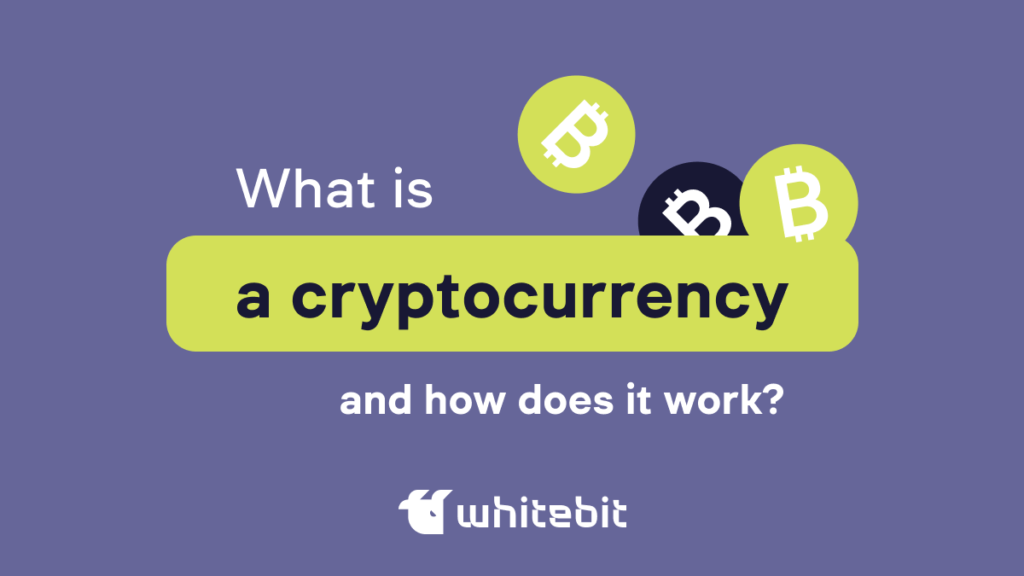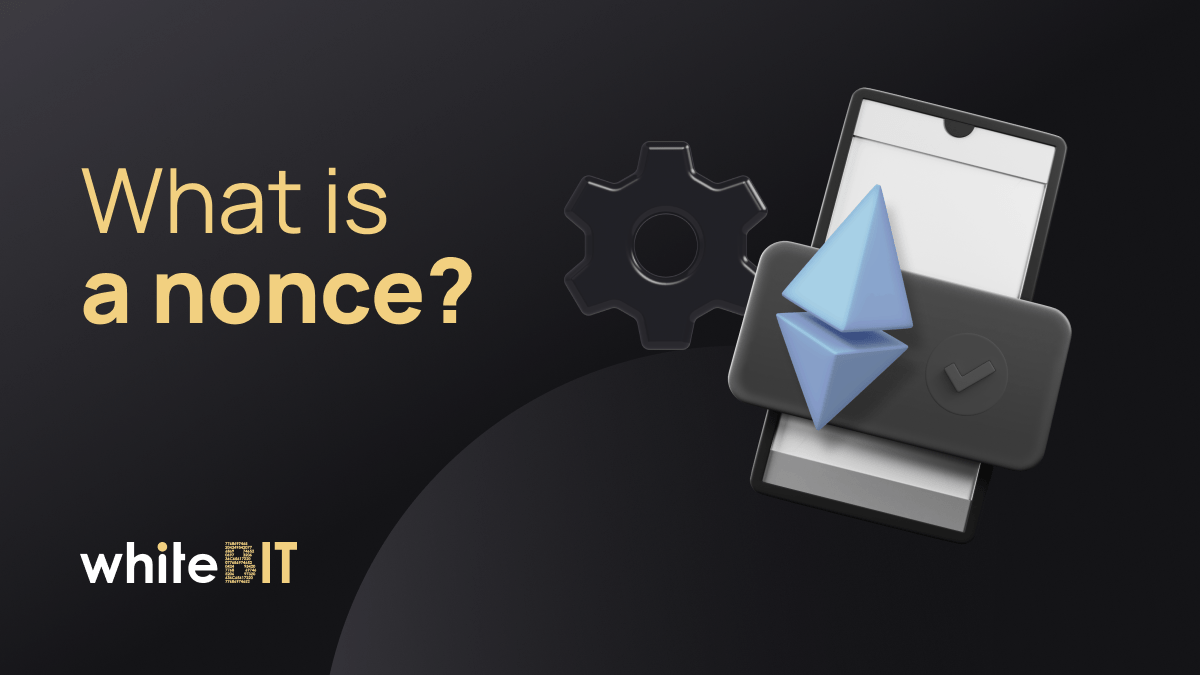What is a cryptocurrency, and how does it work?

Content
The cryptocurrency market can both fall and rise. It is now obvious that blockchain technology and digital money will sooner or later become an important part of our lives. This article will describe the basic terms and phenomena of crypto for beginners who have long wanted to understand what is cryptocurrency. Now Blockchain, Coins, Bitcoin, Tokens, NFT, DeFi, Crypto Security and more will become clear.
What is cryptocurrency
Cryptocurrency is digital money that is not backed by physical assets like traditional money. The accounting unit of cryptocurrency is a coin. Cryptocurrencies are created using a special data encryption technology (cryptography). Yes, this is where the name of cryptocurrencies comes from, which appeared after the publication of the Forbes article in 2011. Until this moment, for example, bitcoin was called electronic cash.
Crypto is decentralized because it works thanks to the computing work of many independent computers called nodes. It is decentralization that makes crypto an alternative to traditional finance concentrated in banks.
Most cryptos are based on blockchain, a distributed data ledger that stores transaction data in a chain of blocks. Crypto exists only in digital format. Digital assets differ depending on their use case. Nowadays, cryptocurrency plays different roles:
- Investment tool — receiving passive income;
- Means of payment;
- Method of capital accumulation;
- To pay for goods and services in the real and virtual world.
In other words, you can invest in crypto for:
- earning more money from a crypto asset price change;
- having crypto to claim your right for revenue in some company or vote for some decisions of this company;
- paying with crypto for some goods like a cup of coffee or even a car;
- paying with digital coins for some services online, like a gaming feature.
Why is cryptocurrency needed?
The main point of cryptocurrency is decentralization and independence. Cryptocurrencies emerged as an answer to the financial and economic crisis of 2007-2008. The main reasons for the crisis were:
- The US mortgage default crisis;
- Banks that uncontrollably issued unreliable investment instruments that created the mortgage crisis;
- Governments that failed to regulate banks.
Early crypto-enthusiasts sought to invent an alternative financial system that would not be controlled by governments and banks.
Blockchain technology makes Peer-to-Peer money transfers available (directly, without intermediaries). Since cryptocurrencies work on blockchains, there are no untrustworthy intermediaries that can engage in manipulation.
What is blockchain?
Blockchain technology is a digital database that runs on software. Its original purpose is cryptography, or the encryption of data in a chain of blocks with records of that data. Blockchain is the underlying technology of cryptocurrencies. Every crypto transaction goes through the blockchain. Different cryptocurrencies may have different blockchains, but most cryptocurrencies run on the Ethereum network blockchain.
The most famous banking system is SWIFT. It validates transactions and updates data in banks’ databases. Blockchain contains both functions.
How does blockchain work?
Blockchain works as a distributed ledger — data records are spread through the network of servers. Each server is a computer — called a node — governed by a user of this network. A record is called a block. Many of these blocks operate as a chain – that is why the technology is called the blockchain.
Several blocks create a sequence of blocks — a chain. The data encrypted in each block cannot be modified without changes in previous blocks. This system makes blockchain a relatively safe database because frauds cannot intrude on the data without a trace.
Some servers process this data to make the whole system work. As the amount of data can be big, the system is automated. The main checks and balances here is the consensus mechanism. This is like a parliament within the blockchain. This mechanism approves or dismisses each transaction. Here’s how to get to this parliament.
For example, Bitcoin uses Proof-of-Work (so-called mining) to process data. This means that people and companies with very powerful computers run the appropriate software that processes a lot of data. To motivate such people to do this work, they receive a reward for each mined block — bitcoins.
In order to increase the value of cryptocurrencies and prevent inflation of the asset, halving occurs periodically — the reward for mining new blocks is halved. Bitcoin halving, for example, happens once every 4 years.
Due to the shortcomings of Proof-of-Work, which lead to an increase in mining capacity and electricity costs, a special consensus algorithm was developed in the blockchain — Proof-of-Stake (PoS). For instance, Ethereum, Cardano, Tezos, Algorand and Solana use such an algorithm.
This means that all data is processed by special software, smart contracts (programs that are automatically executed when pre-agreed conditions are met). When there is a question about the legitimacy of a particular transaction, the users with the most tokens in such a network decide whether the transaction is okay.
In order to motivate users to have numerous tokens that ensure the operation of the network, staking appeared. Staking is the blocking of tokens on a separate smart contract for a certain period. As a reward, stakers receive a profit as a predetermined percentage of the amount of blocked tokens.
Staking resembles a bank deposit, which is needed by the bank to ensure its operation (maintain liquidity), for which the bank rewards the client with a percentage of the deposit amount.
How does cryptocurrency work?
Cryptocurrency operates on a decentralized, peer-to-peer network, meaning that transactions take place directly between users without the need for a central authority or intermediary, such as a bank.
When a user wants to make a transaction, they use a digital wallet that holds the crypto. The transaction goes to the network and other users verify it. Once verified, the transaction is added to the blockchain, which is a public ledger of all transactions on the network. The transaction is then considered to be complete and the ownership of the cryptocurrency is transferred from one user to another.
So what is Bitcoin?
Bitcoin is a cryptocurrency that runs on its own blockchain. Bitcoin is the first cryptocurrency and the most famous of all. The Bitcoin Whitepaper (a document describing how the crypto project works) was published in 2008 by Satoshi Nakamoto. And already at the beginning of 2009, the Bitcoin network was launched.
Satoshi Nakamoto is anonymous. There are different versions of the identity of the author of Bitcoin, to the point that a whole group of developers hides under this pseudonym.
Types of cryptocurrencies
Cryptocurrency can seem complicated. There are coins, tokens, altcoins, NFTs and other confusing words. All of them have characteristic features, so you can figure it out.
Coins
A coin is a cryptocurrency with its own blockchain. Blockchain is a complex technology that developers put a lot of effort and time into creating. Coins with their own blockchain include: Bitcoin, Ethereum, XRP, Solana, Tezos, EOS and many others.
For example, the ETH coin has its own Ethereum blockchain and performs all transactions within that network. Ethereum’s architecture allows users to use this blockchain for many purposes, from labor contracts to voting in elections. Thousands of decentralized applications (DApps) have already been successfully launched on the basis of the Ethereum blockchain.
Therefore, many crypto companies are joining the Ethereum blockchain to create their cryptocurrency or implement other ideas. Uniswap, 1inch, Aave, MakerDAO, Sandbox, Chainlink and others can be considered such projects.
Tokens
Many cryptocurrency developers use existing blockchains to launch their cryptocurrency.
A cryptocurrency without its blockchain, for example, made on Ethereum, is a token. Many cryptocurrencies have been created on Ethereum. Token holders mainly receive the following benefits:
- Management within the community;
- Profit share;
- Reduction of the commission in the network.
Tokens are divided into several types:
- Security is a token that gives a share of ownership of a financial instrument, such as shares or bonds.
- Utility is the token that represents the most value within its network.
- Asset-backed – a token whose value is confirmed by a real asset that does not exist on the blockchain. For example, gold or currency.
Stablecoins
Stablecoin is a token that is pegged to a commodity (such as gold) or a regular currency. They exist as more stable cryptocurrencies with much fewer risks of price changes. The most popular stablecoins (Tether, USD Coin, Binance USD, DAI) are pegged to the US dollar.
Some stablecoins may face a lack of liquidity, which in turn leads to the fact that the price of such assets begins to diverge from the fiat currency or exchange commodity to which they are pegged.
Altcoins
An altcoin is any coin but Bitcoin. As Bitcoin is the first, the most trusted, and the biggest cryptocurrency by capitalization (thus, the most used), any other cryptocurrency is considered an alternative to Bitcoin. That is why they are called alternative coins, or simply altcoins.
NFT
NFT (non-fungible token) is a token that is not interchangeable. Unlike other cryptocurrencies, each token has its own digital signature, making NFTs unique.
Therefore, NFTs are often used to digitize works of art such as music, pictures, paintings, texts, etc.
NFTs also run on the blockchain.
DeFi
DeFi (decentralized finance) consists of many decentralized applications (DApps) that provide financial services. DeFi aims to be an alternative to traditional finance. DeFi provides users with an ecosystem that works to automate various protocols (such as smart contracts) that allow them to dispense with the services of intermediaries such as banks and payment systems.
The main DeFi services are:
- Lending
- Loan of assets with interest
- Derivatives trading
- Exchange
DeFi uses cryptocurrency as a payment method for transactions between users.
Advantages of cryptocurrencies
Cryptocurrencies provide users with unique opportunities unavailable to traditional financial and investment instruments.
Volatility
Volatility is the change in the price of any asset over a period of time. Stock market considers the deviation of the asset by more than 10% from the daily norm as highly volatile. In crypto, these indicators can reach several hundred percent.
The cryptocurrency market has high volatility, which is often associated with lack of liquidity or rapid trend changes and capital flows from one project to another. This means that crypto prices can increase significantly and fall sharply in a matter of days and even hours.
High volatility attracts traders who get a high-risk but high-reward trading option. Traders use various trading instruments such as futures and margin trading to be able to profit more from market volatility.
Independence
Cryptocurrencies are decentralized, so no government can interfere with your finances through regulation. Also, it gives freedom from intermediaries like banks who can invest your money to earn more income.
Speed
Crypto transactions are much faster than bank transactions. Crypto takes slightly longer than a few seconds to process transactions. However, this is still less than days for bank transfers, especially between different countries and financial systems.
Disadvantages of cryptocurrencies
Like everything in this world, cryptocurrency has some disadvantages that you should be aware of.
Volatility
High volatility makes cryptocurrencies a very risky investment option. If your approach to crypto investment is easy-going and relies on luck or someone’s opinion, you can turn $100 into $0,001 in just one day. So volatility is both an advantage and disadvantage of cryptocurrency. Before investing in cryptocurrency, you should be very confident in your decision and remember, that your money may both multiply and be wasted.
Lack of Regulation
The main idea of cryptocurrency is decentralization and independence from the government and its regulations. At the same time, governments’ regulations of finance are not an absolute evil and often prevent fraud and too risky projects. For instance, in the history of crypto, several exchanges ran into bankruptcy because of loose regulation, and some of them were outright scams.
How is the cryptocurrency price formed?
The price of cryptocurrency is the result of supply and demand. The price of a certain cryptocurrency is high when there is a high demand and a lack of supply. The price is low when there is less demand and more supply. For example, if a cryptocurrency with 1 billion tokens went viral, its value could be anywhere from $1 to $10.
Also, the price can be formed due to the shortage of the asset due to staking, and the deflationary model – burning of tokens, which also creates a shortage.
For example, the WBT token has a deflationary model. The project team buys tokens from the market and burns them to ensure token deflation. The shortage is also created by users simply holding WBT tokens to reduce cryptocurrency exchange trading fees.
More often than not, when a token just enters the market, the number of tokens in use is small. After some time, a much larger number of tokens may enter circulation. Therefore, if a token costs $1 with a capitalization of $1 billion, then after the appearance of another 90% of tokens on the market, the price will already be $0.1 with a capitalization of $1 billion. Therefore, it is worth paying attention to the Fully Diluted and Total Supply indicators.
Top 10 cryptocurrencies by capitalization
Several useful resources track cryptocurrencies by capitalization. The most famous are CoinMarketCap and CoinGecko. By the end of 2022, the ten largest cryptocurrencies by capitalization:
- Bitcoin (BTC);
- Ethereum (ETH);
- Tether (USDT);
- USD Coin (USDC);
- BNB (BNB);
- Binance USD (BUSD);
- XRP (XRP);
- Dogecoin (DOGE);
- Cardano (ADA);
- Polygon (MATIC).
Therefore, Bitcoin is the most valuable cryptocurrency with a relatively limited supply, high demand (due to widespread recognition) and a proven reputation for the ability to increase in value.
Is cryptocurrency a good investment?
Cryptocurrency can be a good investment if you take it seriously. Crypto is at an early stage of adoption and development, is very popular and has great potential to become an official payment method in many countries.
Even now, cryptocurrency is a good investment tool with potentially high rewards, but with higher risks.
FAQ
Cryptocurrency is a digital asset that can be used:
- As a payment method for real goods and services;
- As an investment for trading;
- As a payment method for virtual goods and services;
- As a share in a company.
Plenty of centralized exchanges propose users both deposit and withdraw crypto in fiat money. Mostly, it requires bank transactions, not cash.
Cryptocurrency is a relatively safe investment. Though crypto is still a highly volatile market. As with any investment, it is important to do research and analysis before investing. Additionally, it is important to ensure that you are storing your cryptocurrency in a safe and secure manner, such as using a hardware wallet.








